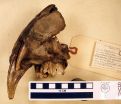Prolific authors raise concerns about industry dominance in diabetes research
2015-07-02
(Press-News.org) Diabetes research is dominated by a small group of prolific authors, raising questions about the imbalance of power and conflict of interests in this field, argue experts in The BMJ this week.
In a new study, Frits Holleman and colleagues searched PubMed for all randomised controlled studies (RCTs) on glucose lowering treatments for diabetes from 1993 to 2013.
In total, they identified 3,782 articles with 13,592 authors.
The top 110 authors were named in a third (32.4%) of all articles, and they authored 991 RCTs, equivalent to 20 RCTs per author.
Of these 110 authors, 44% were employed by pharmaceutical companies and 56% were academics who worked closely with the industry. And of the 991 RCTs, 906 were commercially sponsored.
More than 80% of the top 110 authors came from four countries -- the USA, Italy, the UK or Germany.
A group of 11 authors, referred to as 'supertrialists', contributed to 397 (10%) of all articles, including 354 RCTs, equivalent to 42 publications each.
Overall, 704 articles could be assessed for conflicts of interest, and only 42 (6%) were considered fully independent. In articles with at least one pharmaceutical author, 89% of the co-authors had a conflict of interest.
The authors of the study write that the evidence base for diabetes might suffer from a small number of "truly independent research and an over-reliance of the diabetes community on a few authors from a few countries who have substantial conflicts of interest."
They argue that authorship should be distributed more fairly and call on journals to provide more detail on the individual contribution of authors in line with recommendations from The International Committee of Medical Journal Editors.
In a linked editorial, Elizabeth Wager argues that this study highlights "a serious imbalance of power" and calls for a "change of institutional culture" to reward quality of research over quantity of articles. She also calls for a "radical overhaul" of authorship guidelines for a new system that reflects current research practices.
INFORMATION:
ELSE PRESS RELEASES FROM THIS DATE:
2015-07-02
Philadelphia -- Elias S. Siraj, M.D., FACP, FACE, director of the Diabetes Program at Temple University Hospital (TUH), and Kevin J. Williams, M.D., FACP, chief of endocrinology, diabetes and metabolism at TUH, co-authored an editorial piece published July 2 in the New England Journal of Medicine about a major weight loss study involving obese and overweight patients.
Siraj and Williams offered their take on the significance of the randomized, double-blind clinical trial that showed a daily injection of 3.0 mg of the drug liraglutide, when given as an adjunct to diet ...
2015-07-02
Scientists have identified a group of genetic mutations in patients with aplastic anemia, which likely will help doctors optimize treatment for this rare and deadly blood condition. The study, appearing in the New England Journal of Medicine, could lead to tailor-made treatment plans for aplastic anemia patients as part of the emerging precision medicine movement. It is the largest study of its kind to examine gene mutations in aplastic anemia, the scientists note.
The work involved researchers from the National Institutes of Health, the Cleveland Clinic, Cleveland, ...
2015-07-01
DALLAS, July 1, 2015 -- While menopause is commonly considered a risk factor for heart disease, menopausal women had a lower risk of dying from heart attack than men; however, this difference was less pronounced among blacks, according to research in the Journal of the American Heart Association.
In the first study to compare men and women and how menopause types impact risk of heart attack, researchers studied 23,086 black and white adults over age 45 and found:
White women who had surgical-induced menopause had a 35 percent reduced risk of non-fatal heart attacks ...
2015-07-01
As we walk along a forest path, the soil beneath our feet seems like a uniform substance. However, it is an intricate network of soil particles, pores, minerals, soil microbes, and more. It is awash in variety.
Soil is a living, dynamic substance, and the microbial life within it is crucial to providing plant life with the food they need to grow. The microbes can be bacteria or fungi, but both need space--the pores--for a good living environment.
Soil particles that clump together are aggregates. These are the architectural building blocks of soil. Their presence ...
2015-07-01
Alexandria, VA - Analyzing thousands of records, researchers have reinforced the claim that for marine life, bigger has been better for the last 542 million years. The study examined Cope's rule - the idea, named for paleontologist Edward Drinker Cope, that species evolve to larger sizes over time.
With the help of undergraduate students and high-school interns, the researchers compiled information on five major marine phyla, including arthropods, brachiopods, chordates, echinoderms and mollusks. Find out how much bigger things got in the June issue of EARTH Magazine: ...
2015-07-01
New research shows that the fearsome teeth of the saber-toothed cat Smilodon fatalis fully emerged at a later age than those of modern big cats, but grew at a rate about double that of their living relatives. The findings, published today in the journal PLOS ONE and based on a new technique that combines isotopic analysis and x-ray imaging, for the first time provide specific ages for developmental events in Smilodon, notably in their teeth. The study estimates that the eruption rate of S. fatalis's permanent upper canines was 6 millimeters per month--double the growth ...
2015-07-01
Statins are a hugely popular drug class used to manage blood cholesterol levels and reduce the risk of heart disease. Previous studies had raised questions about adverse behavioral changes with statins, such as irritability or violence, but findings with statins have been inconsistent. In the first randomized trial to look at statin effects on behavior, researchers at the University of California, San Diego School of Medicine report that aggressive behavior typically declined among men placed on statins (compared to placebo), but typically increased among women placed on ...
2015-07-01
A newly-discovered, 48-million-year-old fossil, known as a "Jesus lizard" for its ability to walk on water, may provide insight into how climate change may affect tropical species, according to a study published July 1 in the open-access journal PLOS ONE by Jack Conrad from American Museum of Natural History.
Modern relatives of the Jesus lizard live in an area stretching from central Mexico to northern Colombia, flourishing in the higher temperatures found at the equator. Members of various animal, plant, fungal, and other clades currently confined to the tropics or ...
2015-07-01
An international team of researchers has found some of the first solid evidence that narcolepsy may be a so-called "hit-and-run" autoimmune disease.
The researchers sought to determine why, of two different flu vaccines widely deployed during the 2009 swine flu pandemic, only one was associated with a spike in the incidence of narcolepsy, a rare sleep disorder.
A paper describing their findings will be published July 1 in Science Translational Medicine. Lawrence Steinman, MD, a professor of pediatrics and of neurology and neurological sciences, is the senior author. ...
2015-07-01
While most Americans do not support policies designed to increase distribution of naloxone - a medication that reverses the effects of a drug overdose - certain types of educational messages about its lifesaving benefits may bolster support for its use, new Johns Hopkins Bloomberg School of Public Health research suggests.
In a report published July 1 in the journal PLOS ONE, the researchers say that combining educational messages about naloxone with sympathetic narratives about people who could have been saved had the drug been available could be key to increasing support ...
LAST 30 PRESS RELEASES:
[Press-News.org] Prolific authors raise concerns about industry dominance in diabetes research

